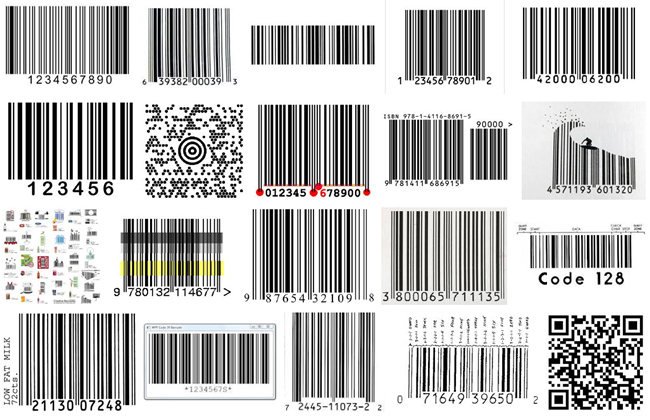The ubiquitous and utilitarian barcode turns 60 years old. Now, it’s upstart and more fashionable sibling, the QR or quick response, code, seems to be stealing the show by finding its way from the product on the grocery store shelf to the world of art and design.
[div class=attrib]From the New York Times:[end-div]
It’s usually cause for celebration when a product turns 60. How could it have survived for so long, unless it is genuinely wanted or needed, or maybe both?
One of the sexagenarians this year, the bar code, has more reasons than most to celebrate. Having been a familiar part of daily life for decades, those black vertical lines have taken on a new role of telling ethically aware consumers whether their prospective purchases are ecologically and socially responsible. Not bad for a 60-year-old.
But a new rival has surfaced. A younger version of the bar code, the QR, or “Quick Response” code, threatens to become as ubiquitous as the original, and is usurping some of its functions. Both symbols are black and white, geometric in style and rectangular in shape, but there the similarities end, because each one has a dramatically different impact on the visual landscape, aesthetically and symbolically.
First, the bar code. The idea of embedding information about a product, including its price, in a visual code that could be decrypted quickly and accurately at supermarket checkouts was hatched in the late 1940s by Bernard Silver and Norman Joseph Woodland, graduate students at the Drexel Institute of Technology in Philadelphia. Their idea was that retailers would benefit from speeding up the checkout process, enabling them to employ fewer staff, and from reducing the expense and inconvenience caused when employees keyed in the wrong prices.
…
At 8.01 a.m. on June 26, 1974, a packet of Wrigley’s Juicy Fruit chewing gum was sold for 67 cents at a Marsh Supermarket in Troy, Ohio — the first commercial transaction to use a bar code. More than five billion bar-coded products are now scanned at checkouts worldwide every day. Some of those codes will also have been vetted on the cellphones of shoppers who wanted to check the product’s impact on their health and the environment, and the ethical credentials of the manufacturer. They do so by photographing the bar code with their phones and using an application to access information about the product on ethical rating Web sites like GoodGuide.
As for the QR code, it was developed in the mid-1990s by the Japanese carmaker Toyota to track components during the manufacturing process. A mosaic of tiny black squares on a white background, the QR code has greater storage capacity than the original bar code. Soon, Japanese cellphone makers were adding QR readers to camera phones, and people were using them to download text, films and Web links from QR codes on magazines, newspapers, billboards and packaging. The mosaic codes then appeared in other countries and are now common all over the world. Anyone who has downloaded a QR reading application can decrypt them with a camera phone.
[div class=attrib]Read the entire article here.[end-div]
[div class=attrib]Image courtesy of Google search.[end-div]

